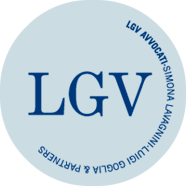AGCOM: ISSUED THE GUIDELINES RELATED TO THE REGULATION ON THE CLASSIFICATION OF AUDIOVISUAL WORKS INTENDED FOR THE WEB AND VIDEOGAMES, WICH WILL ENTER INTO FORCE ON OCTOBER18, 2019
05/09/2019
With Resolution no. 359/19 / CONS, published on July 18, 2019, the AGCOM (the Italian “Authority for Communications Guarantees”) issued the guidelines relating to the classification of audiovisual works intended for the web and videogames, pursuant to the regulation approved with Resolution 74/19/CONS (later amended, even if to a limited extent only, with resolution 358/19 / CONS). The guidelines clarify how to implement the classification, which must be reported by all the audiovisual works destined for the web and videogames for their distribution in Italy. The purpose is to protect minors from inappropriate contents, warning on them and indicating the appropriate age thresholds for the use of the works, in order to guide families and the public of consumers. With the same resolution, a Permanent Observatory was also established at the AGCOM, with supervisory functions and control over compliance with the new legislation, as well as power to propose updates to the regulation.
As far as videogames are concerned, the guidelines confirm the equivalence between the AGCOM classification systems and the PEGI (“Pan-European Game Information”) European classification system. Consequently, videogames already classified according to the PEGI system do comply with the provisions of the regulation without any further charges.
In the case of videogames already on the market and not having the PEGI classification, it will be necessary to comply with the PEGI or the AGCOM classifications as soon as possible (the obligations come into effect starting from October 18, 2019). If not, fines that can start from € 25,000 and reach € 350,000 are risked.
According to the legislation, the obligations above fall on the distributors, i.e. the providers of audiovisual media services and the providers of hosting services, even if the determination of the burden of complying with the classification can be negotiated between these subjects and the operators of the industry that provide videogame licenses.
If the AGCOM classification is chosen, since AGCOM does not have certifying functions, but only surveillance functions, it is on the subject obliged to the classification to carry out the appropriate assessments, based on the regulation and the guidelines, deciding which age groups should be applied and which are the most appropriate content descriptors (according to the table in Annex A.2 to the Guidelines, which distinguishes between bad language, discrimination and hate speech, drugs, fear, gambling, sex, violence, purchases in the video game). Based on this evaluation, the appropriate pictograms and descriptors will have to be used, also on marketing material and product packaging if sold online, with dimensions that cannot be lower than 25 x 25 pixels.
The guidelines help to clarify a new scenario for Italian operators, which implies some interpretative and applicative difficulties, and leave open some important questions, such as the applicability of the regulation only to Italian distributors (or even – and if so under what conditions – to foreign distributors); the update of the materials related to videogames distributed before the regulation came into force (which sometimes also presents technical difficulties, such as those concerning the impossibility to amend contents posted on social media); how to deal with particular hypotheses, such as streaming, user-generated contents, etc. These are issues that may perhaps be addressed and resolved within the Permanent Observatory established by Resolution 359/19 / CONS., which has the primary purpose of verifying the implementation of the legislation and its possible completion/update.
